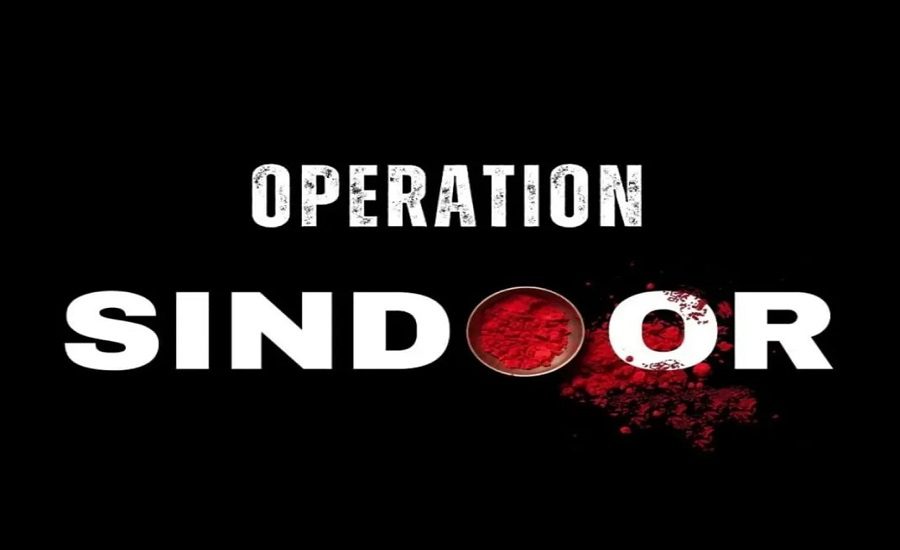Operation Sindoor Aftermath: What’s Been Lost, What’s at Stake & Who Is Suffering
The Other Side of Victory
Srinagar 08 May 2025: Operation Sindoor—India’s powerful cross-border military response targeting nine key terror sites in Pakistan and Pakistan-occupied Kashmir (PoK)—has captured headlines and generated political noise. The operation, hailed by many as a strategic masterstroke, was conducted with surgical precision. It reportedly neutralized several terror camps suspected to be involved in the Pahalgam bus attack that killed scores of Amarnath pilgrims. However, what followed in its wake is far more complex and troubling.
This article moves beyond the headlines to explore the nuanced reality of Operation Sindoor’s aftermath: what’s been irreversibly lost, what is dangerously at stake, and who continues to bear the brunt.
What Has Been Lost?
01. Civilian Lives and Crumbling Infrastructure
The most immediate and tragic cost of Operation Sindoor has been the loss of innocent lives. While military officials emphasized minimal collateral damage, reports from the ground tell a different story.
-
- Casualties: Independent and regional media estimate more than 70 people have died across both sides of the Line of Control (LoC), including many civilians. Retaliatory shelling by Pakistan further escalated the toll.
- Injuries and Medical Strain: Hundreds have sustained injuries. With hospitals in border districts like Kupwara, Baramulla, and Poonch overwhelmed, the healthcare system is under tremendous strain.
- Destruction of Homes: In villages close to the LoC—such as Tangdhar, Uri, and Mendhar—dozens of homes have been destroyed, displacing thousands.
- Hydropower Disruption: Pakistan’s claim that the Neelum-Jhelum Hydropower Project sustained damage raises serious questions about regional water security and infrastructure resilience.
02. Economic Fallout: A War on Wallets
Trade and Business Disruption
Cross-border trade, especially through the Uri-Muzaffarabad and Poonch-Rawalakot routes, has come to a complete halt. Thousands of traders, including small business owners who rely on the exchange of goods like handicrafts, dry fruits, and textiles, are staring at mounting losses.
Stock Market Shockwaves
-
- In both India and Pakistan, stock markets witnessed sharp drops and recovery rallies, driven by media coverage and political statements. The Sensex and KSE100 indexes lost significant value in the days following the strike.
- Investors are now wary of further escalation, with the defense sector rising, while tourism and consumer goods stocks slump.
Tourism Collapse in Kashmir
Kashmir’s tourism sector, already fragile post-COVID and due to prior unrest, has suffered a fresh blow.
-
- Cancellations: Travel agencies report over 80% cancellations by tourists, especially from Gujarat, Maharashtra, and Tamil Nadu.
- Loss of Livelihoods: Hotel owners, shikara operators, houseboat workers, and tour guides have seen their incomes vanish overnight.
What Is at Stake?
01. Regional Stability Hanging by a Thread
With Pakistan vowing revenge and continuing its cross-border provocations, South Asia stands at the brink of prolonged instability.
Diplomatic Gridlock
-
- Diplomatic backchannels between India and Pakistan have reportedly frozen. There’s growing concern that a lack of communication could lead to miscalculations.
- Global powers like the United States, China, and the European Union have urged restraint, but their statements lack the urgency required to de-escalate the situation.
Escalation Risks
Every skirmish now carries the potential to spark a larger conflict—perhaps even a limited war.
-
- The Indian Army has increased troop deployment along the LoC.
- Pakistan’s air force has intensified patrols in regions around Lahore and Bahawalpur.
02. The Unfolding Humanitarian Crisis
Medical Supply Shortages
-
- With road access restricted in several conflict-hit areas, delivery of essential medical supplies is delayed or halted.
- Patients with chronic conditions—cancer, diabetes, and kidney failure—are unable to access life-saving medicines.
Food and Water Insecurity
-
- Supply chains across the Kashmir Valley and border villages are disrupted.
- Groceries, fresh produce, milk, and even clean drinking water are now hard to access in many rural areas.
Mental Health Toll
-
- Fear and trauma are spreading among children, the elderly, and displaced families.
- NGOs report increased anxiety, depression, and even suicide attempts, especially in the districts closest to the LoC.
Who Is Suffering the Most?
01. Civilians Trapped in Crossfire
The greatest cost of this military conflict is borne by civilians—on both sides of the border.
In Indian-administered Kashmir
-
- Families in Kupwara, Uri, and Rajouri are living in makeshift shelters or government-run relief camps.
- Schools have shut down indefinitely. Children have missed their annual exams and are falling behind academically.
In Pakistan-administered Kashmir and Punjab
-
- Civilians near Muridke and Bahawalpur—areas close to targeted terror infrastructure—are facing power cuts, curfews, and panic.
- Damage to roads, bridges, and homes has forced many into temporary displacement.
02. Small Businesses, Farmers & Laborers
-
- Local artisans, handicraft traders, apple farmers in Kashmir, and truck drivers who transport goods across states and borders have seen their earnings crash.
- Many laborers have returned to their villages, jobless and without clarity on when the region might stabilize.
03. Families of Soldiers and Terror Victims
Mourning, Uncertainty, and Unanswered Questions
-
- Families of Indian soldiers killed in the line of duty are demanding transparency about the mission and long-term security plans.
- Survivors of the Pahalgam attack and their families are yet to receive comprehensive compensation or psychological support.
Bottom-Line – Beyond Retaliation: A Call for Peace, Preparedness, and People-Centric Policies
Operation Sindoor may have disrupted terror networks in the short term, but its consequences have seeped deep into civilian life, economy, and regional peace. The operation highlights a core truth: when nations go to war, it is often the common people who pay the heaviest price.
Moving Forward:
- Diplomatic Engagement must be revived at all costs, backed by third-party mediation if necessary.
- Humanitarian Aid needs urgent mobilization for displaced and affected civilians.
- Economic Support packages for small businesses, farmers, and tourism operators are essential to prevent long-term collapse.
- Mental Health Services must be integrated into disaster response protocols, especially in conflict zones.



